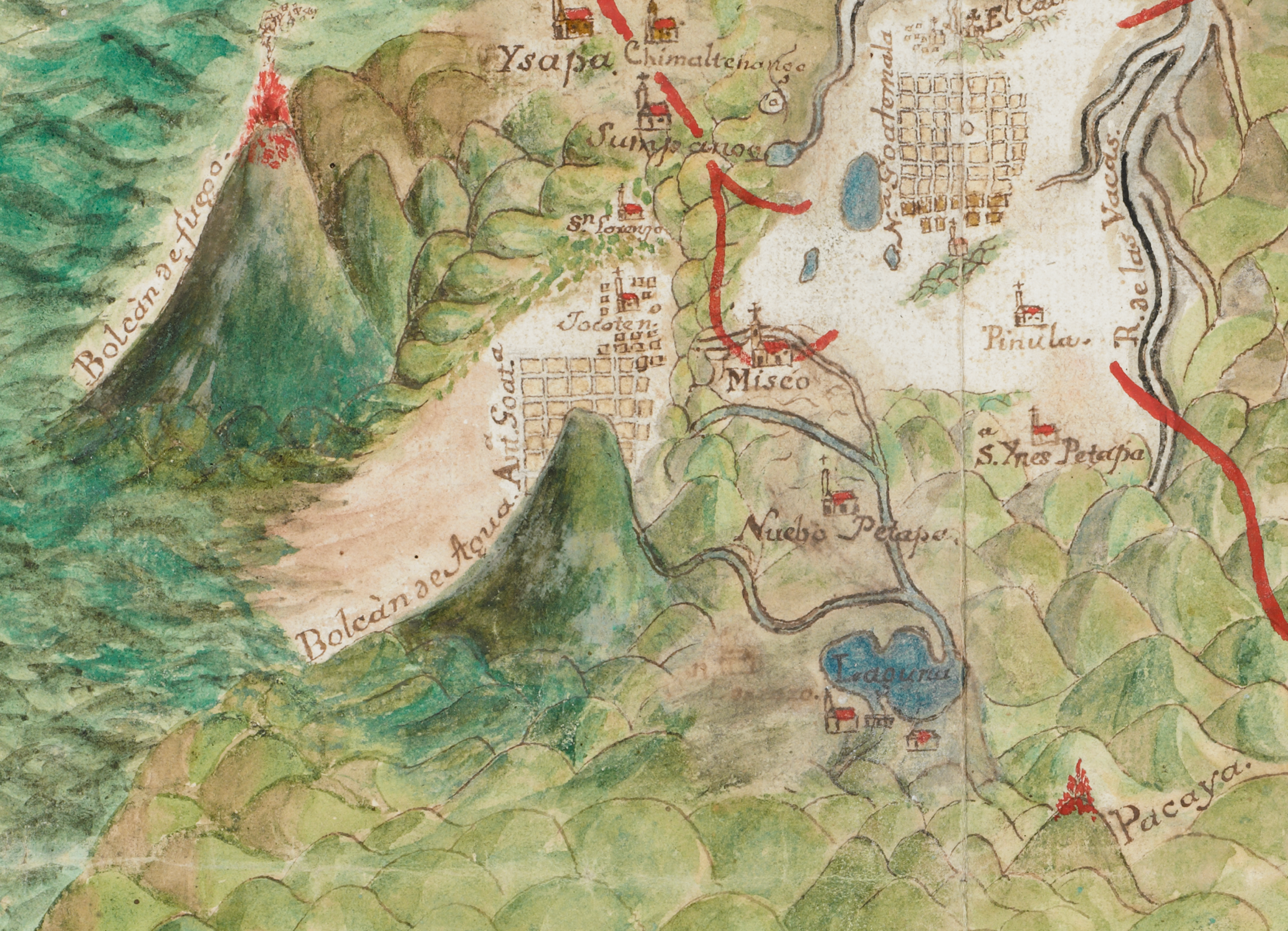A rather large and imposing object of knowledge, active volcanoes have shaped life in the region for centuries. A key moment in the history of Guatemala occurred in 1773 when a massive earthquake destroyed the old capital of Antigua Guatemala, provoking an assessment of the damage and a general inquiry into the nature of volcanoes and natural risk. Colonial functionaries examined the relationship between ‘the water volcano’ of Pacaya and other nearby volcanoes, especially the ‘fire volcano’ or volcán de fuego. The relationship between active and apparently dormant volcanoes and the question of whether they were connected under the earth’s crust preoccupied European savants as well. The governor of Guatemala used the 1775 eruption as further evidence to justify the removal of the capital to a new site, called simply Nueva Guatemala. The decision was not just about risk assessment, however. Merchants who wished to upset the power of the old families pushed for the change. Many of the poor who could not afford to move were left behind. Then as now, natural disasters could not be separated from the acquisition of new knowledge and the challenge of social change.
Volcano
Sophie Brockmann
Further reading
- Brockmann, S. (Forthcoming) Visions of Useful Nature: Science, Landscape and Enlightenment in Central America, 1784–1838 (Cambridge: Cambridge University Press).
- Dym, J., and C. Belaubre (eds.) (2007) Politics, Economy and Society in Bourbon Central America (Boulder, CO: University of Colorado Press).
- Oliver-Smith, A., and S. Hoffman (eds.) (2000) The Angry Earth: Disaster in Anthropological Perspective (New York, NY/London: Routledge).
- Sellers-García, S. (2014) Distance and Documents at the Spanish Empire’s Periphery (Stanford, CA: Stanford University Press).
- Walker, C.F. (2008) Shaky Colonialism: The 1746 Earthquake-Tsunami in Lima, Peru, and Its Long Aftermath (Durham, NC: Duke University Press).





